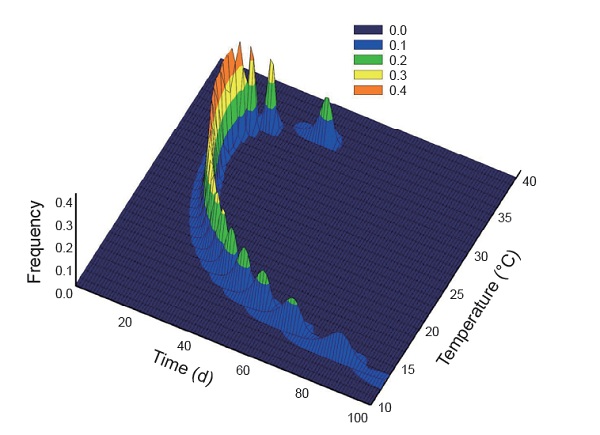Current issue

Author:Jeong Joon Ahn, Jung-Eun Kim, Jong-Hwan Shin, and Yu-Bing Huang*
Abstract:
The oriental fruit fly, Bactrocera dorsalis (Hendel), is a highly invasive and adaptable agricultural pest, posing significant challenges across diverse ecological and climatic conditions. This study investigates the influence of temperature on the development, longevity, and fecundity of B. dorsalis based on the results of laboratory experiments. We analyzed the data using both linear and nonlinear modeling approaches to better understand the temperature-dependent biological characteristics of B. dorsalis. These models identify critical thermal thresholds and optimal temperature ranges for providing insights into key life history traits and population dynamics under changing environmental conditions. By integrating temperature-dependent models, this study highlights their potential to refine pest management strategies, including precise timing for interventions such as trap deployment, chemical applications, and sterile insect techniques (SIT). Moreover, these models provide a valuable framework for assessing the impacts of climate change on B. dorsalis phenology and geographic distribution, supporting the development of adaptive and sustainable pest management practices tailored to diverse agroecosystems.
Key words:Bactrocera dorsalis, Temperature-dependent traits, Population modeling, Pest management, Climate change
Download:![]() PDF Links
PDF Links
 Submit your manuscript
Submit your manuscript
 Guide for authors
Guide for authors